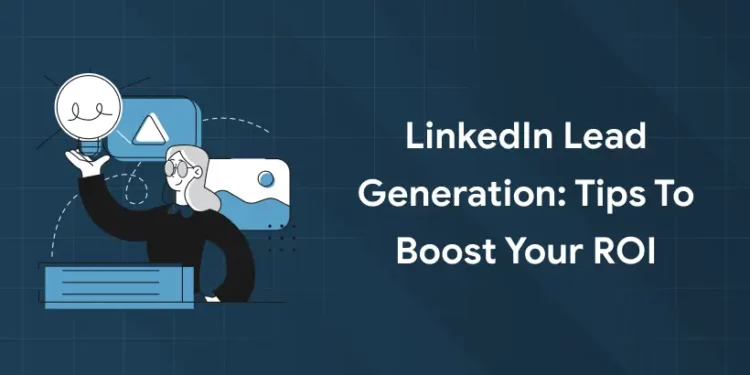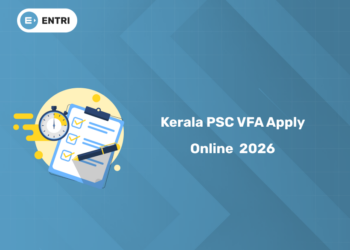Table of Contents
Lead generation is an essential priority for any firm looking to generate continuous and reliable income. Companies utilize a range of sales and marketing strategies to create leads. But in any such case, well-defined procedures are required. LinkedIn is an exceptionally strong tool for increasing both exposure and income as a B2B company, especially given that audiences exposed to brand communications on LinkedIn are 6 times more likely to convert. But it might not be as simple as it is said. The important question we have to first answer is ‘How to generate leads on LinkedIn?’. Let us look into it!
How to generate leads on LinkedIn: Introduction
A marketing lead is an individual or business that actively looks for business issue solutions and shows interest in the information, goods, or services offered by an organization. Name, contact information, firm information, and any other relevant data must be included in a comprehensive lead. Marketers target different sorts of B2B marketing leads according to where they are in the funnel. There are five primary lead types. Identifying these leads enables marketers to provide relevant content, collect data, and nurture them successfully.
| Type of Lead | Description |
| Information Qualified Lead (IQL) | A business that has expressed interest in the contents of an organization. |
| Marketing Qualified Lead (MQL) | A business that has submitted contact information indicating interest in one of the company’s goods or services. |
| Sales Qualified Lead (SQL) | A business that has expressed interest in the goods or services offered by an organization and is prepared to make a purchase. |
| Sales Ready Lead (SRL) | A firm that is prepared to purchase from the specific vendor they have been researching. |
| Product Qualified Lead (PQL) | A firm that has utilized the goods or services of a company |
Achieving optimal lead generation is crucial for marketers seeking to increase ad spend and acquire new clients. The best tool for marketers to obtain quality leads is LinkedIn Ads. With seamless pre-filled forms, LinkedIn lead generation forms may help gather even more quality leads from LinkedIn adverts. But how to generate leads on LinkedIn? Let us read to learn more about this.
What is Lead Generation in Marketing?
1: What is the primary goal of SEO (Search Engine Optimization)?
The deliberate process of locating, drawing in, and fostering a connection with potential clients to win new business is known as marketing lead generation. It’s a component of both the sales and marketing processes; sales teams work on outbound lead generation and completing the deal, while marketers concentrate on inbound lead generation and qualifying prospects.
Using techniques like account-based marketing, content marketing, email marketing, and paid advertising (including LinkedIn Ads), B2B marketers develop programs that generate leads. The sales staff obtains contact information from potential consumers using top-of-funnel marketing methods.
Marketing leads are usually obtained through webinars (demo requests), downloading gated content (ebooks, movies, etc.), filling out online forms, or visiting landing sites for further information.
Get the best mentors to learn digital marketing! Join Entri Elevate’s digital marketing course now!
Become an AI-powered Digital Marketing Expert
Master AI-Driven Digital Marketing: Learn Core Skills and Tools to Lead the Industry!
Explore CourseWhy Should You Use LinkedIn?
LinkedIn is a powerful tool for lead generation because of its vast user base and professional orientation. Here are a few reasons to consider using LinkedIn as a lead generation tool.
Targeted Audience
LinkedIn has approximately 900 million users, which means that it offers a significant pool of potential leads. You may narrow down your target to certain locations, industries, job titles, and more.
Focus on B2B
LinkedIn is a business-to-business sales, marketing, and recruiting tool. It is hence ideal for generating leads in this field.
Trustworthiness and Credibility
The professional environment on LinkedIn fosters trust and credibility, which helps with lead creation and relationship-building.
Content Marketing
Share educational materials such as webinars, videos, and articles to showcase your expertise and attract potential clients. LinkedIn offers a variety of advertising options, including sponsored content, sponsored InMail, and display advertisements, to assist you in reaching your target market.
Lead-Generating Forms
Through LinkedIn’s lead-generating forms, prospective leads may quickly show interest in your product or service with a few clicks.
Integration With Popular Marketing Automation Platforms
Integrating LinkedIn with well-known marketing automation solutions will help you create leads and follow up on them faster.
Economical
Compared to other traditional lead-generating strategies, LinkedIn may offer a more cost-effective way to reach a large audience and generate high-quality leads.
How to Generate Leads on LinkedIn?
We were trying to answer the question ‘How to generate leads on LinkedIn?’. The set of inbound marketing procedures a company does to find and nurture new clients is known as the marketing lead generation process. The lead-generation process involves the following steps.
Determining The Target Demographic
Determine the client categories and demographics that the company wishes to target, including interests, income level, geography, and age.
Attracting Interested Leads
Provide material that will pique the interest of the intended audience and encourage them to subscribe.
Capturing Leads
Make sure that forms, landing pages, and gated content have a compelling call-to-action (CTA) that prompts interested leads to provide their name, email address, and phone number.
Qualifying Leads
Not every lead is equal. To ascertain which leads are most likely to become paying clients, marketing teams need to create a lead-scoring system.
Nurturing Leads
Rarely do business-to-business (B2B) buyers purchase the spot. Businesses go through a drawn-out sales procedure. As a means of fostering trust and demonstrating how a good or service addresses issues, marketing departments ought to keep offering customized materials.
Converting Leads
Deal closure is within the purview of the sales team. To drive upsells and cross-sell chances, however, marketing teams may keep sending resources.
Examining The Procedure for Generating Leads
Analyze the success of lead generation efforts to find out what worked and what needs to be improved.
Making Future Campaigns More Efficient
Make data-driven decisions to optimize marketing and advertising expenditure and future campaign performance.
All of this information is learned as the fundamentals in a digital marketing course. In the wide range of courses available online which one is reliable? Have you heard about the Entri Elevate digital marketing course? It offers many benefits to students. Some of them are listed below.
- Immersive, inclusive and hybrid sessions
- Sessions for teaching soft skills
- Sessions conducted by industry experts
- Industry networking
- Illinois Tech Certification
- Recorded sessions
- Placement assistance
Click here to learn more about the Entri Elevate digital marketing course! Register here now!
What is ROI?
A performance metric called return on investment (ROI) is used to compare the effectiveness of several distinct investments or assess how profitable or efficient an investment is. ROI makes an effort to calculate the exact return on an investment about its cost. The benefit (or return) of an investment is divided by the investment’s cost to determine ROI. Either a percentage or a ratio is used to convey the outcome.
Importance of ROI
ROI matters since it guides your decision-making when it comes to allocating funds for lead creation. You can determine which channels, sources, and methods are bringing in the most money and which ones are underperforming or squandering your resources by monitoring and evaluating the return on investment (ROI) of your lead generation initiatives. To choose the ideal campaign for your target audience and objectives, you may also evaluate the returns on investment of several campaigns and try out various iterations. ROI also allows you to justify your lead-generating expenses and demonstrate your worth to stakeholders and clients.
How Do We Calculate ROI?
While there are other methods for calculating ROI, the following formula is used more often.
ROI = (Revenue – Cost) / Cost x 100%
This formula displays the campaign’s profit or loss as a proportion of its total cost. The time value of money, which states that a dollar now is worth more than a dollar tomorrow, is not taken into consideration by this calculation. You may use a more intricate calculation to account for this, which entails calculating the net present value (NPV) of your cash flows. This is calculated by adding the present values of current expenses and future earnings. To determine the NPV and ROI of your lead generation initiatives, you can utilize spreadsheet software or internet calculators.
Factors Affecting ROI
Numerous variables, including the amount and quality of your leads, the cost and effectiveness of your lead-generating channels, and the customer lifetime value and retention rate, all have an impact on the return on investment (ROI) of your lead generation initiatives. Based on fit, interest, and purchase readiness, leads may be prioritized and nurtured using lead scoring and segmentation. For tracking and optimizing lead generation expenses across channels like email, social media, SEO, PPC, webinars, events, etc., tools like Google Analytics, HubSpot, or Salesforce are helpful. Furthermore, email marketing and customer relationship management (CRM) software may be utilized to establish enduring ties with clients and boost advocacy, referrals, and repeat business. These tactics can all contribute to a higher ROI.
Become an AI-powered Digital Marketing Expert
Master AI-Driven Digital Marketing: Learn Core Skills and Tools to Lead the Industry!
Explore CourseLinkedIn Lead Generation: Tips to Boost Your ROI
Lead generation encompasses all of the actions and methods you employ to attract new consumers. Lead generation is vital because, with nurturing, potential consumers may convert into paying customers who utilize your goods and produce revenue. LinkedIn’s target audience consists of professional decision-makers with purchasing power, allowing you to talk directly to potential consumers who may become paying customers. Here are some tips to boost your ROI and hence lead generation.
Set Your Goals and Metrics
You must have a well-defined goal and a strategy in place before you begin lead generation. What market, specialty, and target audience, do you have in mind? What qualities define your dream buyer persona and client profile? How many leads must you produce to reach your revenue and sales targets? Which key performance indicators (KPIs) will enable you to monitor and assess your lead-generating efforts? You may focus on the quality and relevancy of your leads and coordinate your lead-generation efforts with your business objectives by clearly establishing your goals and metrics.
Select The Appropriate Channels and Strategies
Lead generation may be achieved through a variety of strategies, including SEO, PPC, webinars, social media, email, and content marketing. But not every strategy and channel will be effective with your target market and sector. To determine which are most successful and efficient for your lead-generating plan, you must conduct some study and testing. Your time, money, and resource limitations must also be taken into account. Spending money and energy on advertising platforms and strategies that don’t work or have low conversion rates is something you want to avoid doing. Prioritize the ones that can assist you in achieving your objectives and have a good return on investment.
Nurture Your Leads
The process of generating leads is only the beginning. Additionally, you must engage and educate your leads until they are prepared to purchase from you. This is known as lead nurturing. Building trust and loyalty, shortening your sales cycle, and raising your conversion rate all depend on lead nurturing. You may nurture your leads by giving them with meaningful and relevant information, such as blog articles, ebooks, case studies, videos, podcasts, newsletters, and more. Additionally, you may interact with your prospects and tailor your messaging to their interests, needs, and behaviour by using email marketing, social media marketing, and CRM systems. You may improve your chances of closing the transaction by guiding your leads through the sales funnel through nurturing.
Assess The Quality of Your Leads
Not every lead is equally qualified, and some might not be a suitable fit for the goods or services you offer. It is necessary to qualify your leads, which entails determining how interested, prepared, and compatible they are with your offer. To qualify your leads, you may apply a variety of criteria and techniques, including lead scoring, lead grading, lead magnets, and BANT (budget, authority, need, and timing). You may focus your sales efforts on the leads with the most potential and value by qualifying your prospects. Additionally, you may save time and money by not pursuing leads that are unlikely to become devoted clients or convert.
Analyse And Optimize the Outcomes
The process of generating leads ends with an analysis and optimization of your findings. You must track and evaluate your lead generation efforts, comparing the results to your objectives and KPIs. It is vital to ascertain the effective and ineffective aspects of your lead creation tactics, together with the potential avenues and risks for enhancement. Making educated judgments and modifying your lead generation efforts requires the usage of data and feedback. A variety of factors and components, including headlines, content, graphics, calls to action, landing sites, forms, and more, need to be tested. You may raise your ROI and meet your lead generation objectives by examining and refining your outcomes.
What to Do When ROI Does Not Improve?
Sometimes the ROI does not improve with the strategy you implement. If this happens you cannot power through the losses till you are successful. There should be immediate action and changes in plans. Do the following things if you think that your present strategy does not give the expected results when it comes to ROI.
Reassess Objectives
There are instances when your ambitions are the problem. Are they SMART (specific, measurable, attainable, relevant, and time-bound)? It’s like attempting to strike a target in the dark if your lead generation objectives aren’t in line with these standards. Rethink what success means for your lead-generating campaigns by taking a step back. Make sure your goals align with your overall business plan and are both attainable and clear. For any strategic endeavour to provide a noticeable return on investment, alignment is essential.
Analyze Data
Understanding why your lead generation approach isn’t producing the anticipated return on investment requires data analysis. Examine the data closely for trends that point to areas where the process is not working well. Are you drawing in the appropriate crowd? Does the conversion funnel have a point at which potential leads stop converting? You can find opportunities for improvement and bottlenecks by closely examining your data. With this knowledge, you may improve your plan and make well-informed decisions for greater outcomes.
Enhance Channel Performance
Your lead-generating ROI may be impacted by the channels you use. Ensuring you’re reaching your target audience through the most effective platforms is crucial. Analyze the effectiveness of each channel and think about shifting resources to the ones that perform the best. Sometimes less really is more; if a certain channel isn’t working, it could be wiser to direct your attention in another direction. Messages and strategies within each channel are also adjusted as part of optimization to increase interaction and conversion rates.
Improve the Content
The foundation of lead generation is content. Examine the material you’re creating closely if your strategic planning isn’t boosting your ROI. Does it have value and relevance for your intended audience? Does it provide answers and solve their issues? The correct prospects may be drawn in and advanced through the sales funnel with the help of high-quality, focused content. Think about changing your content strategy to incorporate more compelling, educational, and interesting content that appeals to prospective clients.
Improve Your Targeting
Lead-generating ROI may be greatly impacted by precise targeting. Even the most well-planned techniques won’t work if you aren’t reaching the correct people. Make sure your marketing efforts are focused on the people who are most likely to be interested in what you have to offer by reevaluating your buyer personas. Refine your targeting strategy with the use of behavioural, psychographic, and demographic data to make sure that the individuals who are most likely to become customers see your message.
Cultivate Connections
Developing a rapport with possible leads is a calculated step that can increase return on investment. Use nurturing programs and tailored communications to interact with your audience. Prove to them that you are aware of their requirements and prepared to go above and beyond the call of duty. Good connections build trust, and trust fosters loyalty and recommendations, both of which increase return on investment. Maintain open channels of contact and try to add as much value to each engagement you have with your leads.
How to generate leads on LinkedIn: Conclusion
LinkedIn is a great place to advertise if you want to reach any business-related audience. Its targeting just cannot be equalled by other platforms, but it does force you to think outside the box and consider situations from a unique angle. Its unique targeting is matched by the distinctiveness of its best practices. The tips and tricks discussed above will help you attain success. The information provided in this blog will help you arrive at the answer to the question ‘How to generate leads on LinkedIn?’.
Frequently Asked Questions
Why is it important to advertise across several platforms?
Particularly for B2B companies, the purchasing process never begins and ends on a single platform. B2B consumers investigate goods and services on a range of sites. Several decision-makers must provide their permission during the protracted purchasing process.
Therefore, marketers must fund lead-generation campaigns that assist customers at every point of contact, regardless of where or when they search for answers. Investing in omnichannel marketing and cross-platform advertising is recommended for B2B companies seeking to acquire qualified leads.
What is the importance of investing in advertising as well as retargeting?
A smart way for marketers to capture leads is to invest in B2B advertising on platforms where companies spend a lot of time. For instance, companies can use LinkedIn Ads to customize their advertising campaigns and keep their brand top of mind, as well as to engage their target audience as they continue to research business solutions. Another smart way for marketers to capture leads is through a clever retargeting campaign. The more a prospective buyer comes in contact with your brand, the more likely they are to submit their information. The B2B buying process is lengthy and involved, so a marketing team will rarely be able to capture a lead on the first try—especially a highly qualified lead.
The LinkedIn retargeting pixel sometimes referred to as the LinkedIn Insight Tag, is available to B2B brands who run LinkedIn advertisements. This tag collects visitor data, which it then utilizes for retargeting or optimizing other sponsored advertising campaigns.
What are the benefits of lead generation?
Lead generation’s primary advantage is that it helps businesses acquire new clients and take advantage of upsell, cross-sell, and cross-promotional possibilities, all of which increase sales and promote expansion. These are a few more advantages that businesses get from focusing their lead creation efforts. Some of them are discussed below.
Targeted Marketing
Businesses may nurture leads who are truly interested in a company’s particular content, goods, or services by using marketing lead generation, which removes cold outreach from the marketing mix. A planned approach to lead generation increases marketing effectiveness, reduces marketing expenses, and enhances the calibre of leads marketing teams provide to sales teams. All of these will be done without squandering marketing budgets.
Improved Relationships with Customers
Targeted lead creation facilitates the development of enduring, trustworthy connections with prospective customers. Businesses may establish themselves as prominent thought leaders in their field, a go-to resource for solutions to common business issues, and a reliable source of guidance through effective marketing.
By offering helpful tools, you may increase client acquisition, repeat business, good word-of-mouth, and ultimately, long-term customer loyalty.
Cost-Effective Investment
Any B2B company that wants to stay in business must discover strategies to minimize costs, optimize return on investment, and target the proper leads to minimize marketing expenses. Ad campaigns may be tailored to the target audience, leads can be generated with a higher conversion rate, and businesses can target the correct clients with the support of smart lead-generation tactics.
How can we improve ROI?
Follow the steps given below to improve ROI.
- setting SMART goals and KPIs
- leveraging automation and personalization
- testing and optimizing your strategies











